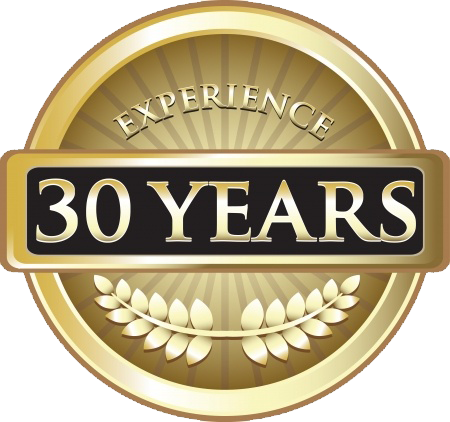-
The poor sleep/appetite relationship!
John’s Doctor made it clear his deteriorating health parameters, including increasing blood sugar, triglycerides, and uric acid, were raising (if not ensuring) his future danger to;
⚕️ Cardiovascular disease,
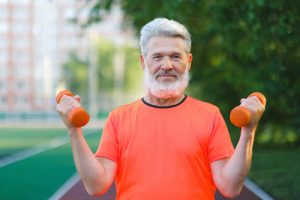
⚕️ Cancer,
⚕️ Cognitive illness,
⚕️ Metabolic syndrome.
John understands ‘his’ three best countertactics.
🏋️♂️ Exercise – continuous aerobic activity & appropriate resistance movements @ 5-7/7.
🥤 Avoid processed food – mainly sugar but also food by numbers (e.g. labels reading, 100's: food colouring, 200's: preservatives, 300's: acid regulators, 400's: emulsifiers, 500's: anti-caking agents, 600's: flavour enhancers). By avoiding refined sugar & food numbers, he knows he'll portion only what he needs.
🛌 Log 6-8 hours of nutritious sleep - most of the time.
John’s six-week progress (10 = best).
Exercise Score = 10/10.
Food Score = 4/10.
Sleep Rating = 2/10.
“Pampy, I’m loving my daily training and feel great for it. However, I can’t seem to kick the sugar thing or feeling like I need to eat for Australia at dinner time. And, damn it, I haven't lost a gram".
Sharing his frustration, I asked John to score the (45-second) sleeping questionnaire - CLICK
John’s questionnaire rating = 9/10. A better & lower score indicates sound nutritious sleep.
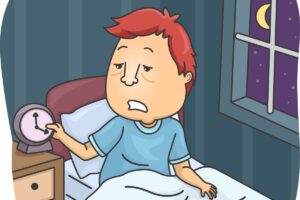
With unfulfilling, regularly interrupted sleep, John is recharging his brain & body to 50%, only.
The typical result of (repeated) broken & lighter sleep.
😟 The brain receives a signal akin to starvation.
😟 It causes a series of hormones to be released, which alters the hunger profile.
😟 As a result, 'thinking' you need more but unfulfilling food is common.
Why?
The only creature that will purposefully skip sleep for no obvious reason seems to be humans.
As a result, when the body experiences sleep deprivation, the brain assumes that the body is starving. I have to search for food when I'm awake.
Regular night-time waking boosts the sympathetic 'fight n flight response – which drives up the stress hormone, cortisol, sugar-burning and hunger.
NOTE – John's CGM (Continuous Glucose Monitor) showed regular spikes in blood glucose during his sleeping time. A very low (red zone) is followed by a glucose high on repeat. A flat and lower (glucose) line is aligned with improved fat-burning, better health, and optimum sleep.

His "false famine signal" boosts the appetite-inducing hormone ghrelin while suppressing the fat-burning hormone leptin (which gives you a feeling of fullness).
John's tiredness quick fix is dietary sweetness, carbs, sugar! The quick fix leaves John unfulfilled and has him eating more, of the good stuff, at main meals (particularly at dinner).
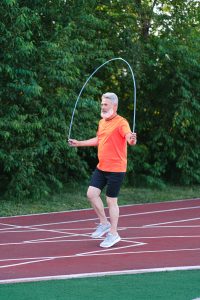
John practised the ‘Circadian Rhythm Reboot’ and finally returned to how he slept as a younger man.
Once his sleep was restored, his food behaviour changed, and with continued exercise, he started losing the weight he didn't need.
-
Mum, runs, again!
Mum, 78, returns to safe healthy running.
Her program.
1. Walk every day between 20-40 minutes for a month.
🏃♀️ Hold a comfortable pace and include a few hills.
2. Week five, three 30 minute walk:run sessions.
🏃♀️Run on grass for 30 seconds with a super short, low to the ground stride while maintaining an easy conversational pace. Walk, briskly for 2.30 minutes between running splits. [30:150 repeat].
3. Week six, four 30 minutes sessions.
4. Week seven, four sessions of 1 minute run & 2 minutes walking for 30 minutes.
5. Week eight, five sessions of 90:90 for 30 minutes.
Her return.
✅ Cardiovascular health.
✅ Bone strength
✅ Lean muscle mass.
Bring on 80!
-
Ride, strongly, forever!
Riding a bike will increase your bike riding strength.
However, consider including these ‘strength’ exercises in your training week
if you want to up the ante.
What matters!
💪 Core & back strength/stability – no platform, no power.
💪 Hip strength – no hips, no legs.
💪 Knee extensor strength – no quads, no go.
The actions.
Front Squats (cycling range).
Step Ups – loaded.
Eccentric Supported Lunges – loaded.
Olypmic plate Clams.
Supermans – DB’s.
all five actions demonstrated
-
Now on the back nine of life, I consider three vital physical components critical towards healthy aging.
1. Additional weight offers almost zero advantage.
2. Losing grip strength will dramatically limit my life.
3. Functional balance & coordination will serve me best.
And if I wrap myself up in cotton wool, I'll die slowly.
That said, I’m watching world-leading rock climber, Alex Hannold, climb Yosemite’s El Cap – ROPELESS! - CLICK HERE
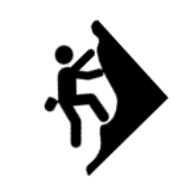
Wiping away 'my' sweat, I observe rock climbers are lean, can hold their weight with two fingers and balance like mountain goats!
Hmmm, maybe I should consider this sport…or is it an art?
I asked three (young) accomplished climbers for their insight!
🧗♂️ Why climb?
🧗♂️ How does one start?
🧗♂️ What are the physical demands?
🧗♂️ Does pre-climbing training help? And what?
🧗♂️ What is the Lords, Augusta, Wimbledon of global rock climbing?
Oh, and if this newbie (and old bloke) is to up-speed, I'd better pick up the vernacular!
Crag - a rock climbing area, typically with multiple routes.
Frothers - amped by the mere thought of a rock, chalk, and gravity!
Beta - climb info worth considering before attempting a new pathway.
Stoke - unlike surfers, who include the emotion four times in every sentence, stoke is only used on big life-changing successful moves.
Crux - nailing the near-impossible move!
THANKS, KHUSH!
The outdoor adventure, the froth and stoke, the head game required, and the ability to go that bit further and get deep into the expanses of the natural world to places few would venture. Climbing is one of the few things that can guarantee you 100% presentness and allow you to reach beautiful flow states while ascending cliffs with your best mates. It's a pretty surreal endeavour at times.
I actually started properly climbing when I moved to the Snowies, learning everything I know within the last 2 years. Living with 2 of the biggest frothers I know (Dyl first and now Haz), has had a big influence on me. I'm now a lead climber and plan to share that stoke for climbing with others, teaching them the ways! But before that, I was messing around in boulder gyms socially.
Physically I find it tough if you're working on the hard stuff, like tough boulder problems or pushing the grades, but as Haz said, a lot of it is mental! To be honest, a good climber understands the movements and their body and doesn't have to be crazy strong. It's a bit of a dance, or yoga on the wall on the big long routes.
As a base, functional strength developed by body weight and weighted compound exercises definitely help, as well as general fitness (running, swimming). Pulling exercises make pulling on rocks more natural. Then comes the specific finger strength, grip strength, endurance training and climbing techniques that the boys know much more about than I.
The mega climbing areas in Australia are the Blue Mountains (NSW) and the Arapiles (VIC).
THANKS, DYLAN!
I climb for adventure, sightseeing, mateship (the crag creed), and physical & mental fitness gains.
Oh, and I’m an engineer (in training) -- we love working things out! This is climbing!
I love starting small and allowing confidence, skill, and ambition to take me beyond my wildest dreams.
As a kid, if there was a cat caught up a tree, I was first up! The higher, the better.
My introduction to chalked hands and super tight shoes was via the indoor bouldering gym in Canberra. I was instantly hooked, and I joined the university club, the QUT Cliffhangers, which taught me everything I know.
If you are looking to get into climbing, I recommend starting at an indoor gym, either bouldering or climbing on a rope, both are great options! The climbing community is super friendly and very welcoming, open to all talent & interest.
University climbing programs appear to be booming. I recommend starting here.
Learning efficient climbing techniques is King! Balance, coordination, rhythm and flow trump extraordinary strength – gained in the gym.
Undoubtedly there is a huge emphasis on mentally mapping your pathway before you make any movements. Visualising each movement and it’s connection with the next is paramount. Oh, and acknowledging your (current) talent and ‘energy’ tank limitations are also critical to enjoying climbing.
Trust me, climbing is a FULL body workout. Yes, hands & forearms play a role, but, your core strength, back, and of course your ‘legs’ must work in synchronicity, or you will fail.
If there’s one body part I now have far superior strength, it’s my hands (and fingers). It took years to hold my body weight with two fingers. Be patient!
Climb-specific training will undoubtedly help and boost your climbing experience.
Chin ups, hangs, moonboards, and finger board pulls will all help. It’s motivating and fun measuring improvements.
Here’s my box list. Come and join me!
Arapiles & Grampians (VIC)
Blue Mountains (NSW)
Tasmania
Yosemite NP (US)
Indian Creek (US)
Squamish (Canada)
Bugaboos (Canada)
Chamonix (France)
Fontainebleau (France)
Patagonia (Argentina/Chile)
THANKS, HARRIE!
